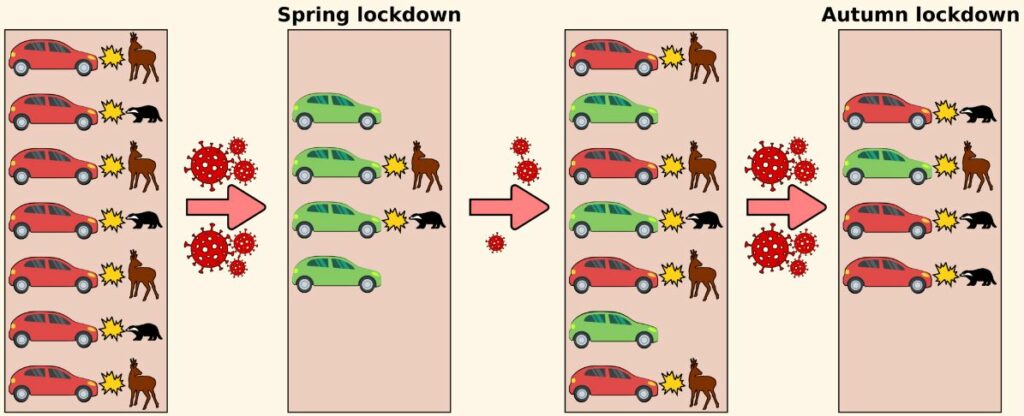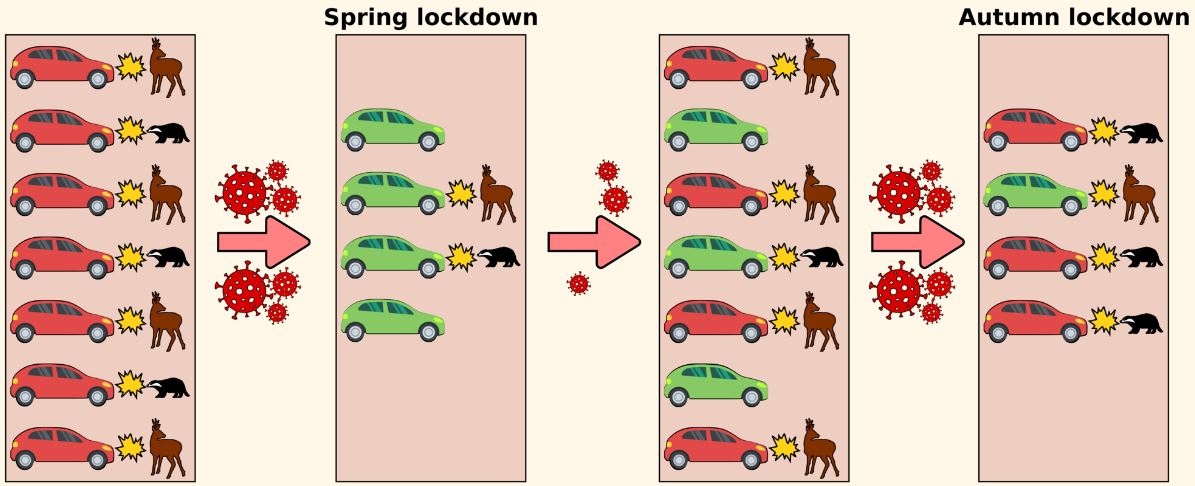The University of Primorska has conducted a study on the impact of the pandemic on the traffic-related mortality of wildlife in Slovenia
Collisions with vehicles are a major cause of wildlife mortality. During the COVID-19 pandemic, many countries enforced lockdowns that reduced vehicular traffic and consequently collisions between cars and wildlife.
But how big was this change? Was it heterogeneous across different wildlife species? And which consequences could it bear for wildlife management, in the long term? The University of Primorska, leading the Citizen Science Initiative on wildlife conservation in Slovenia, has published a paper on the Journal of Applied Ecology addressing these urgent questions.
The UP Team has modelled how the two lockdowns, held in spring and autumn 2020 to mitigate the spread of COVID-19, influenced wildlife-vehicle collisions throughout Slovenia. Researchers used data about wildlife-vehicle collisions from the past decade (2009-2019) to generate forecasts about 2020 and then compared them to real weekly collisions, that were observed for European roe deer, red fox, Eurasian badger, brown hare, stone marten, wild boar, and red deer.
The study points out that reductions in human mobility can indeed reduce collisions between cars and wildlife. However, this reduction is quite different across different species and it can also generate compensatory effects beyond lockdowns. For instance, during the autumn lockdown, although significantly fewer collisions for roe deer and wild boar were observed, an excess of collisions with badgers was noted.

In order to improve population monitoring and management, the Hunters Association of Slovenia (HAS) had already established in 2006 an on-line information system for collecting and archiving data on wildlife mortality, including roadkill, while also developing a reporting scheme for non-hunters through the regional emergency call centres.
The pandemic has made possible an unprecedented large-scale field experiment to test the effects of human mobility on wildlife ecology and behaviour. Diverse sets of data can help understand the complexity of COVID-19 effects on wildlife, while assessing the magnitude of change in the number of roadkill, its interplay with the biology of each species, and its consequences for wildlife management and conservation.
The study claims that findings should support a species-specific perspective when it comes to evaluating management interventions caused by changes in vehicular traffic. Last but not least, the authors contend that data sharing initiatives aiming to create large collaborative datasets combining data from both structured sampling schemes and citizen science should be fostered.

